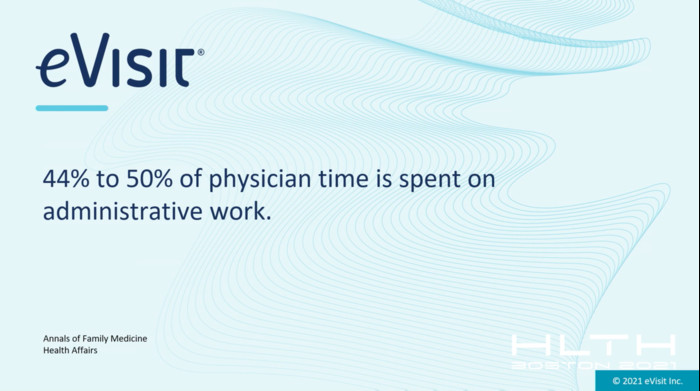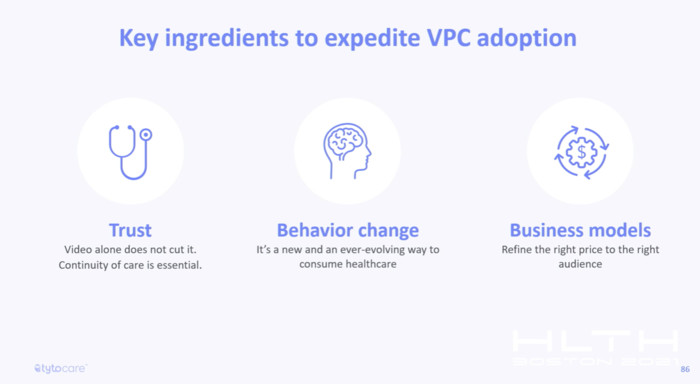Experts discussed how hybrid care is making healthcare systems smarter, how telehealth can reduce clinician burnout, and how telehealth adoption can become a primary part of care. Here are three takeaways from those sessions:
1. Telehealth Is Moving from ‘If’ to ‘When and How’
“Broadly, I think we’re seeing significant transition from people thinking about if telemedicine is for them to when and how, and I think that’s a win for everybody,” said Silverman during a panel session called “Healthcare’s Future: Evolving to a Hybrid Model of Care.”
Though he acknowledged that integrating change into an existing care ecosystem is complicated, he added that “relentless incrementalism” and meeting hospitals where they are will help form sustainable partnerships for better virtual care implementation.
Dr. Zenobia Brown, vice president and medical director of population health at New York-based Northwell Health, highlighted the importance of connecting telehealth to better health outcomes. It’s not enough, she said, that a virtual visit happened — there needs to be data capturing whether telehealth use has led to lower readmissions or lower emergency department visits.
But virtual care deployment is not simply arming clinicians with mobile devices; ensuring that a healthcare organization’s infrastructure can handle more than the electronic medical records systems is imperative.
READ MORE: Find out how healthcare organizations benefit from a virtual care workshop.
“We all thought that our networks were really robust because they have their EMRs and they’re running tons of technology across all these networks,” said Wendy Deibert, senior vice president of clinical solutions at virtual care platform provider Caregility. “And what we really found out is that their networks aren’t ready — they aren’t ready for all this video to be going through the system.”
Hospitals also need to consider user interface, Deibert added. For instance, can a patient portal implement single sign-on rather than cumbersome passwords? Is interoperability baked in?
Brown also emphasized the importance of multilingual platforms at the start of adoption. If virtual care is expected to be an effective bridge for care gaps in underserved communities, solutions that have multilingual functionality need to be a priority.
“How do we leverage the new technology with new processes, with better ways to engage with patients that exceed the current standards?” she asked.
2. Virtual Care Can Help Mitigate Burnout
Administrative work is taking precious physician time away from patients. Research has found that for every hour of face-to-face time with a patient, doctors spend two hours on administration.
“A physician doing admin work, or the charting-side of things, is paramount to a judge acting as a court reporter or a pilot serving in-flight drinks,” said Bret Larsen, CEO and co-founder of virtual care platform eVisit. “It just doesn’t make sense.”













